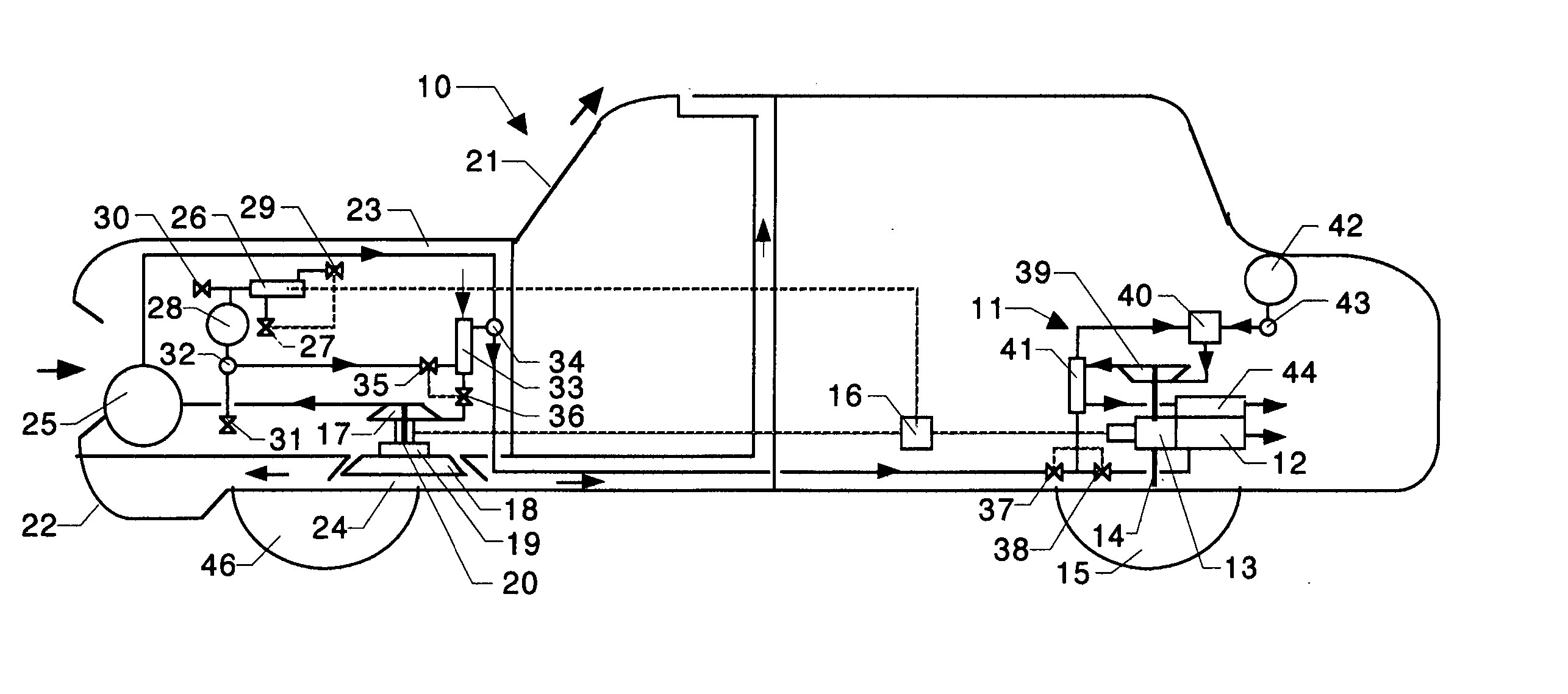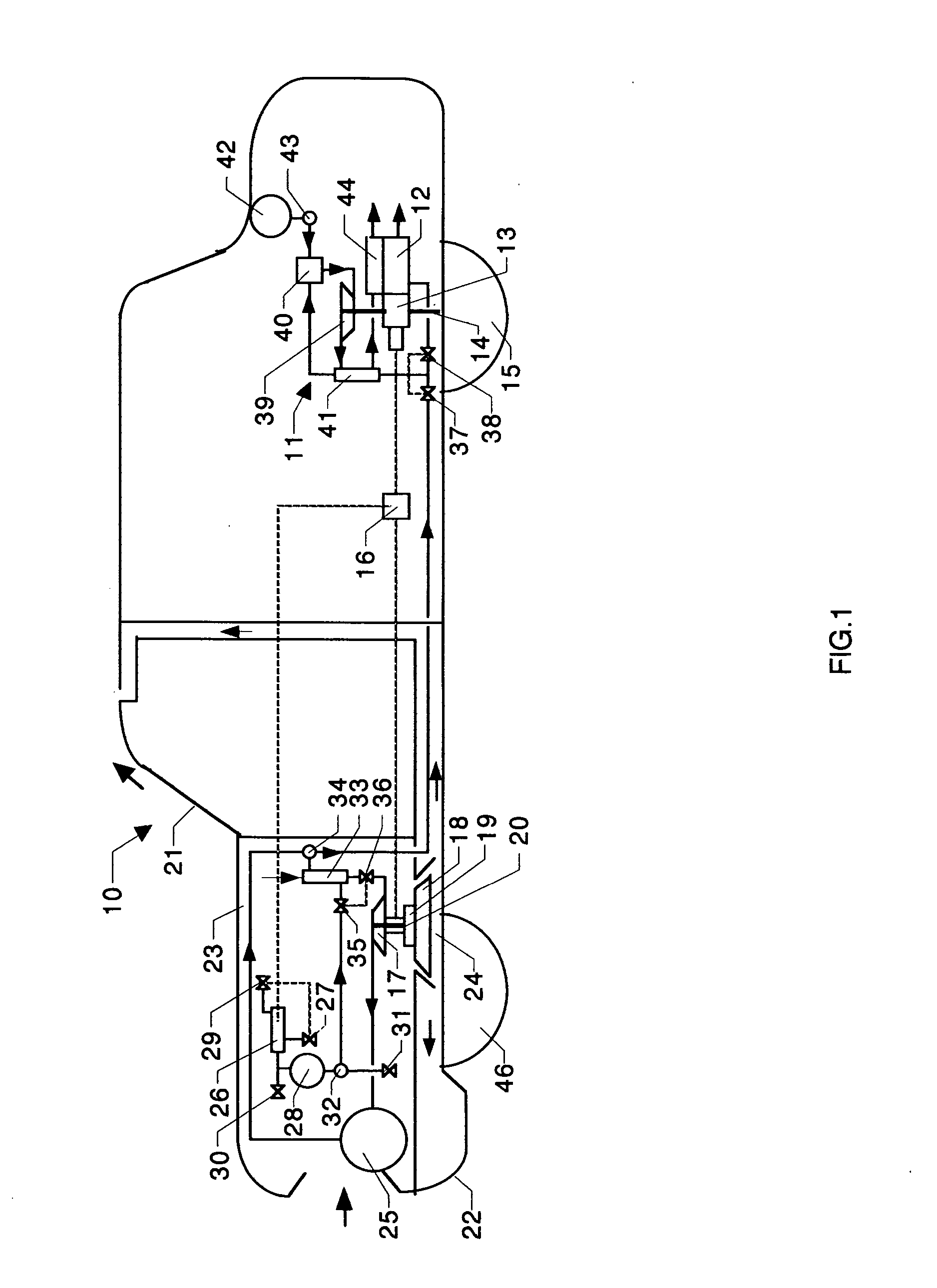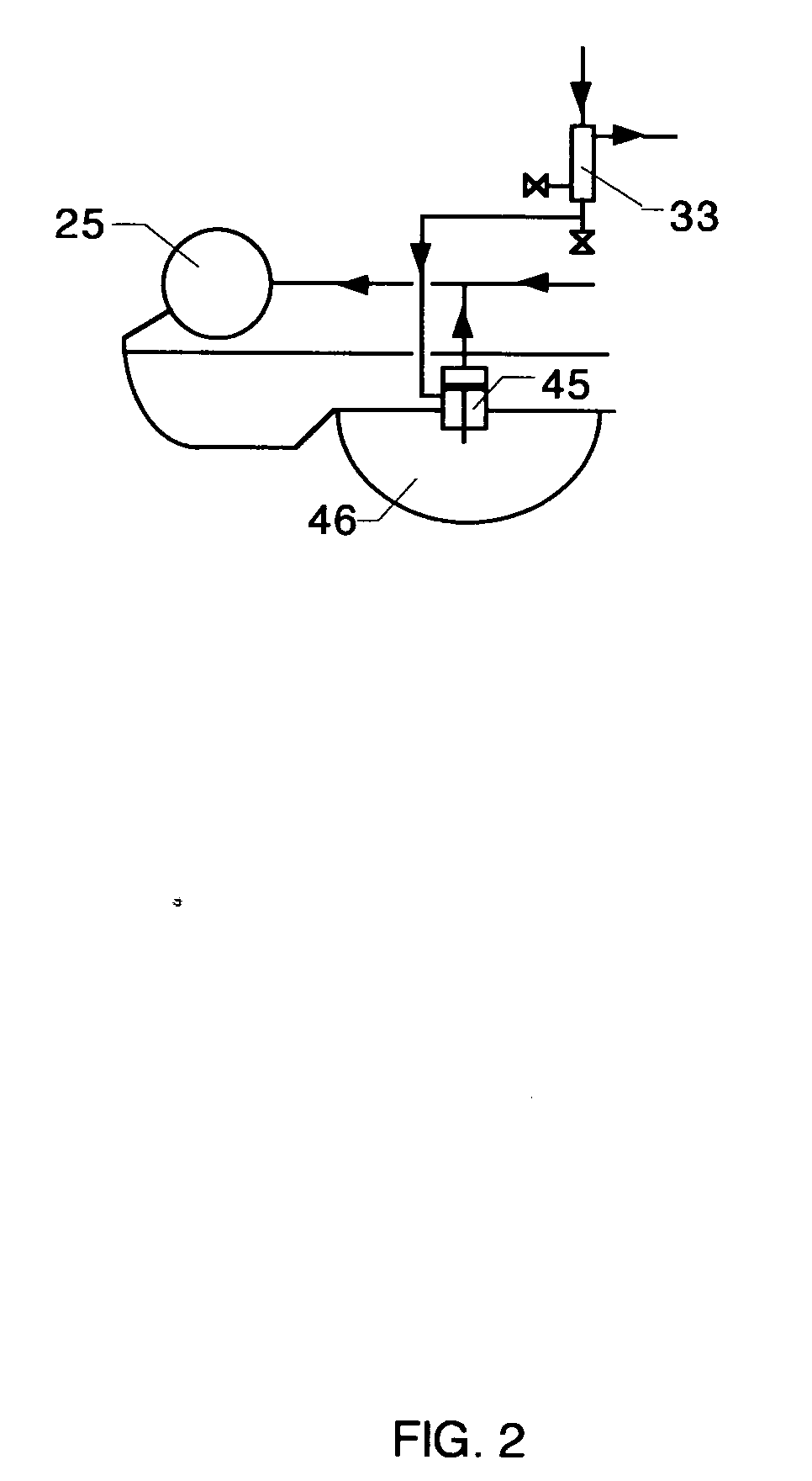Motor vehicle energy recovery, storage, transfer and consumption system
a technology for motor vehicles and energy recovery, applied in the field of motor vehicle energy recovery, storage, transfer and consumption systems, can solve the problems of inability to fully recover deceleration energy, and inability to completely recover shock energy, so as to reduce turbine inlet and exhaust temperatures, reduce emissions, and reduce fuel consumption. the effect of consumption
- Summary
- Abstract
- Description
- Claims
- Application Information
AI Technical Summary
Benefits of technology
Problems solved by technology
Method used
Image
Examples
Embodiment Construction
[0076]FIG. 1 illustrates a preferred embodiment of the energy recovery, storage, transfer and consumption system of the present invention installed in a motor vehicle 10. An engine 11 combined with an air expander 12 by a transmission-generator drive 13 provides prime mover propulsion to the vehicle via a shaft 14 and a rear wheel-axle assembly 15. Deceleration energy is recovered by drive 13, which is electrically connected to a motor controller 16 to power a motor-compressor 17. Wind energy is recovered by an axial wind drive 18 connected to motor-compressor 17 through a clutch 19, which provides torque to a motor-compressor shaft 20 when wind energy is sufficient. Drive 18 operates on the difference between impact pressure and wake suction pressure behind a windshield 21 and an air dam 22. Impact air pressurizes a compartment 23 and discharges through an air duct 24. Motor-compressor 17 compresses air into a compressed air tank 25. An air liquefier 26 draws atmospheric air throug...
PUM
 Login to View More
Login to View More Abstract
Description
Claims
Application Information
 Login to View More
Login to View More - R&D
- Intellectual Property
- Life Sciences
- Materials
- Tech Scout
- Unparalleled Data Quality
- Higher Quality Content
- 60% Fewer Hallucinations
Browse by: Latest US Patents, China's latest patents, Technical Efficacy Thesaurus, Application Domain, Technology Topic, Popular Technical Reports.
© 2025 PatSnap. All rights reserved.Legal|Privacy policy|Modern Slavery Act Transparency Statement|Sitemap|About US| Contact US: help@patsnap.com



